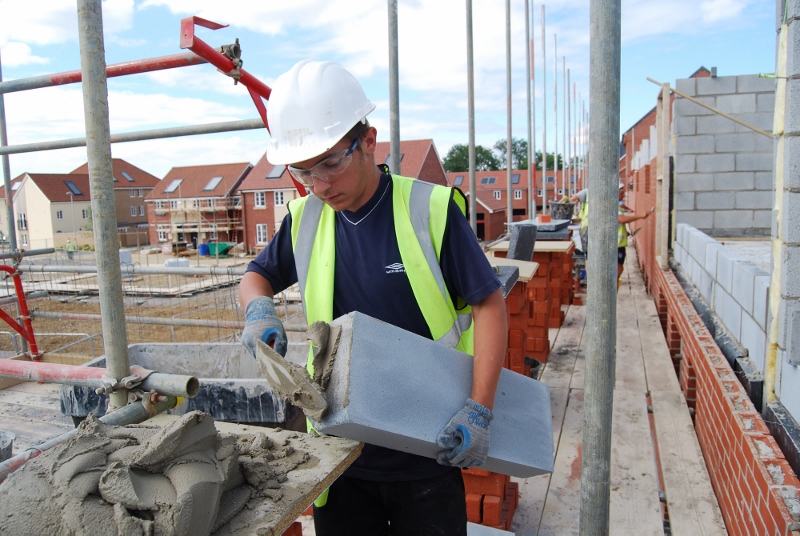A Freedom of Information (FOI) exercise undertaken by the Home Builders Federation has found that more than £50 million of taxpayer money was spent on external legal advice on planning appeals over the past three years.
The money comprises spending by individual councils and by the Planning Inspectorate, an executive agency of the Department for Levelling Up, Housing and Communities responsible for dealing with appeals.
The results obtained through a survey using FOI requests also reveal that 50% of appeals involving dwellings over the three years were approved by the Planning Inspectorate.
The news comes amidst a steep drop in housing supply and a crisis in planning for new homes that has seen:
- Planning permissions numbers plummeting with the number of new sites approved in 2023 lowest on record;
- Over 60 Local Authorities withdrawing plans for new housing following the removal of one of the key planks in the planning system by Michael Gove with the removal of housing targets. Research by Lichfield’s predicted that this would lead to 75,000 fewer homes being planned for and built each year – a prediction that is now playing out with Local Authorities’ resubmitting their Plans with lower numbers in advance of the election of a potential Labour Government that has committed to reverse Goves’ capitulation to the NIMBY wing of his party;
- Underfunded local authority planning departments increasingly overwhelmed by a growing list of planning requirements that has led to major delays in the processing of applications which are now taking in some case up to four years to sign off.

The new data finds that each local council spent an average of £45,000 per year on legal advice relating to planning appeals between 2020/21 and 2022/23, amounting to a national total of £15 million a year.
However, the costs vary greatly from council to council, with some authorities spending significantly more:
- Over the three-year period surveyed, the top 10 councils alone spent £5 million;
- Nine of the 10 biggest spenders are in Southern England where the Government’s abolition of housing targets has led to many councils withdrawing local plans and where house building completions have fallen most severely in the past two years;
- Medway Council spent the most among respondents, with a total of £680,000 over the three years;
- A fifth of councils spent more than double the national average each year
The increased politicisation of the local plan process can be seen playing out, with nine of the ten biggest spenders located in the South East or East of England, areas where development has become increasingly controversial despite also facing the greatest demand and the most stretched affordability.
Additionally, of the five councils spending the most money fighting planning appeals, four have delayed adoption of local plans. This is a trend increasingly seen across local authorities since the Government announced the proposed changes to the National Planning Policy Framework (NPPF) in December 2022 in response to the threat of a backbench rebellion from a group of NIMBY MPs led by Theresa Villiers MP.
In total, more than 60 local authorities have now publicly withdrawn or delayed their local plan consultations, with many more looking to dramatically reduce their housing requirement or simply biding their time and not progressing plans.
The impact of this approach is already impacting local housing supply. Across councils spending the most on legal advice for planning appeals, the majority saw notable decreases in annual housing delivery between the year preceding the period in question (2019/20) and 2022/23. Kingston Upon Thames saw the highest decrease, with net additions in 2022/23 down 53% on 2019/20. Uttlesford was down by 41%, Basingstoke and Deane by 38% and Swale by 23%.
Looking to future supply, London, the South East and East of England, the regions that have the highest spending on legal advice, and these regions have all seen large falls in new planning permissions and housing completions over recent months and years.
Housing supply statistics published in January 2024 recorded annual falls in these regions of between 8 and 14% while planning consents in the South East. Meanwhile, planning consents for new homes granted in the South East fell to a decade-long low in 2023 following a 13% fall on the previous year.
Even in just the three years surveyed here, average annual spend per council increased by 146% between 2020/21 and 2022/23 as anti-development rhetoric at a national level has given greater scope to those looking to oppose new development in their area. Some councils have seen spending increase by significantly more, including the local authority covering the Housing Secretary, Michael Gove’s, own local council – Surrey Heath. The council spent £160,000 across 2021/22 and 2022/23.
An additional FOI request sent to the Planning Inspectorate found that a further £5.6 million was spent by the agency on legal advice to deal with the volume of appeals received over the three-year period.
The Planning Inspectorate deals with planning appeals, national infrastructure planning applications, examinations of local plans and other planning-related and specialist casework in England. Appeals can go to the Planning Inspectorate if an application is refused, if an application takes more than the eight-to-13-week timeline, or if there is a disagreement over planning conditions.
The agency has stated that there has been a significant increase in the number of appeals being received that require a hearing, due to an increase in the number of major housing appeals being received.
The data received from the Planning Inspectorate revealed that, over the three years, 155,000 dwellings were involved in appeals received by the agency. Of these, 73,000 dwellings were allowed. This means that in almost 50% of cases, the Inspector’s decision permitted a development where the original decision from the local authority did not, and 73,000 dwellings that would otherwise not have been built despite the Planning Inspectorate ultimately finding the proposals to be appropriate and in keeping with relevant local policies.
With fewer councils adopting plans or able to demonstrate a five-year housing land supply, the rate of appeals and therefore spending on legal advice relating to appeals, has increased significantly. Planning departments have long faced resource and funding shortages, and so it is concerning that increasingly large amounts of money could be being wasted on processes for unnecessary appeals due to a growing anti-development sentiment in large swathes of the country. Even where councils have adopted a local plan, the rhetoric from Government over the past 12 months has only given licence to those looking to oppose new development in their area.
This FOI follows research from Planning Magazine, which finds that councils are paying out huge sums in cost awards to developers, as a result of “unreasonable” behaviour, often driven by local politics.
Towards the end of the 2023, Gove confirmed that housing targets will be made advisory, with councils able to diverge away from the standard method if they are able to justify a ‘sensitive adjustment’. The impact of this on housing supply will be stark. HBF’s Planning for Economic Failure report predicted the NPPF changes could see housing delivery drop by 77,000 a year. The latest data on net additions to the housing stock shows that housing supply is already stagnating, and HBF’s data on the pipeline of planning permissions being approved indicates that housing supply will drop to record lows in the coming years, with approved units falling to even lower levels than those in the wake of the Global Financial Crash.
Stewart Baseley, executive chairman at the Home Builders Federation said: “Local Authorities should be putting plans in place that provide the number of homes their communities need. Doing so provides certainty for builders and residents alike and would avoid Local Authorities wasting council taxpayers’ money on spurious, politically-motivated legal challenges to new developments.
"In the face of an acute housing crisis, it is alarming that some Councils may be rushing through with local plans in advance of an election to take advantage of watered down housing requirements to plan for fewer homes.
“As we have been warning for some time, the sharp decline in housing supply is the inevitable result of several years of anti-growth policy and rhetoric. The politically driven weakening of the planning system will impact housing supply for years to come and needs to be urgently reversed.
“Removing the requirement for local housing needs assessments and allowing councils to ignore the housing needs of their areas has been shown by the independent Competition and Markets Authority to significantly impact housing affordability moving forward.
“Rather than listening to the hysterical demands of anti-development backbenchers, ministers would be wise to consider the plight of aspiring homeowners and act on the recommendations of the CMA to restore local housing targets and address the long-term inefficiencies of the planning process.
“The social and economic implications of driving down housing delivery are deepening, with a generation unable to access decent housing and investment in jobs and communities all suffering. Putting short term politics over the needs of the country will have long-term consequences for the economy and society.”
The changes to the NPPF will, in effect, allow councils to build as few homes as they wish by removing the requirement for local housing needs assessments. These assessments, calculated using a ‘Standard Method’, will instead be made advisory as a result of the revolt of MPs led by Theresa Villiers. They will give further license to anti-development local authorities to delay the adoption of local plans and reduce levels of new housing supply.
Alongside the Government’s planning proposals, the ongoing failure of politicians to find a solution to the disproportionate ban on new housing by Government quango Natural England’s that is holding up 150,000 homes across swathes of the country is also continuing to impact development. This is despite the clear evidence that new homes are a minimal contributor to the nutrient levels in rivers. with research published by Brookbanks showing that the occupants of new homes account for just 0.29% of total nitrogen emissions each year.




















